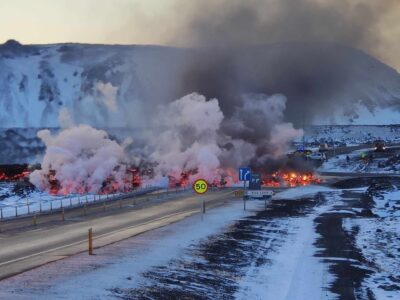Geothermal developers still optimistic
In an article on the remaining optimism among geothermal developers, "Energy Current" is looking into why there is a hope that the industry will continue to thrive despite the current market conditions.
In an article on the remaining optimism among geothermal developers, “Energy Current” is looking into why there is a hope that the industry will continue to thrive despite the current market conditions.
The article describes that “while the global financial crisis continues to rattle financial markets and companies worldwide, and shrinks capital available for renewable energy projects of all types, the outlook for geothermal development remains positive.
Bronko Terzic, global regulatory policy leader for consulting firm Deloitte Inc., sees increased activity among developers and entrepreneurs in all areas of renewable energy, including geothermal.
Still, support from the U.S. Congress via actions such as cap and trading legislation, which will in effect raise the cost of conventional fossil fuel generation closer to or above the cost of alternative energy, will be needed to allow geothermal to thrive. Hurdles such as capital intensive technology also will need to be overcome with financing and incentives such as tax breaks, Terzic noted.
One positive force working in favor of geothermal and other forms of renewable energy is that many more U.S. states and the federal government are adopting renewable portfolio standards, in which electricity suppliers are required to buy 25 percent of their electricity supply from production fueled by renewable energy.
Incoming President Elect Barack Obama also has proposed spending US$150 billion over a 10-year period on renewable programs, including research and development of technologies that will allow more geothermal resources to be detected.”
The article further looks into recent Bureau of Land Management’s resource management plans and the allocation of public land administration for geothermal development, opening a potential of about 5,500 MW to developers by 2015 and another 6,600 MW by 2025. This constitutes a total potential on federal lands of about 12,000 MW. The successful Utah BLM lease sale also show the continuing interest and willingness by developers to continue. Referred is also to Glitnir’s 2008 U.S. Geothermal Energy Market Report, issued in October 2008, which has Arni Magnusson, the bank’s head of its Global Geothermal Energy Team, stating that “compared to last year, the industry is better positioned and availability of drilling rigs has improved.” While oil prices keep dropping, the same applies to other necessary supply to developers which should help regarding the economics of geothermal projects.
There is also increased international cooperation for the further development of geothermal technology with the International Partnership for Geothermal Technology (IPGT) by Iceland, Australia and the U.S. This cooperation provides international collaboration on policy and the technical aspects of enhanced geothermal systems (EGS) such as deep drilling and geothermal energy conversion. The IPGT is open to expansion and will most likely include members from other countries in the future.











